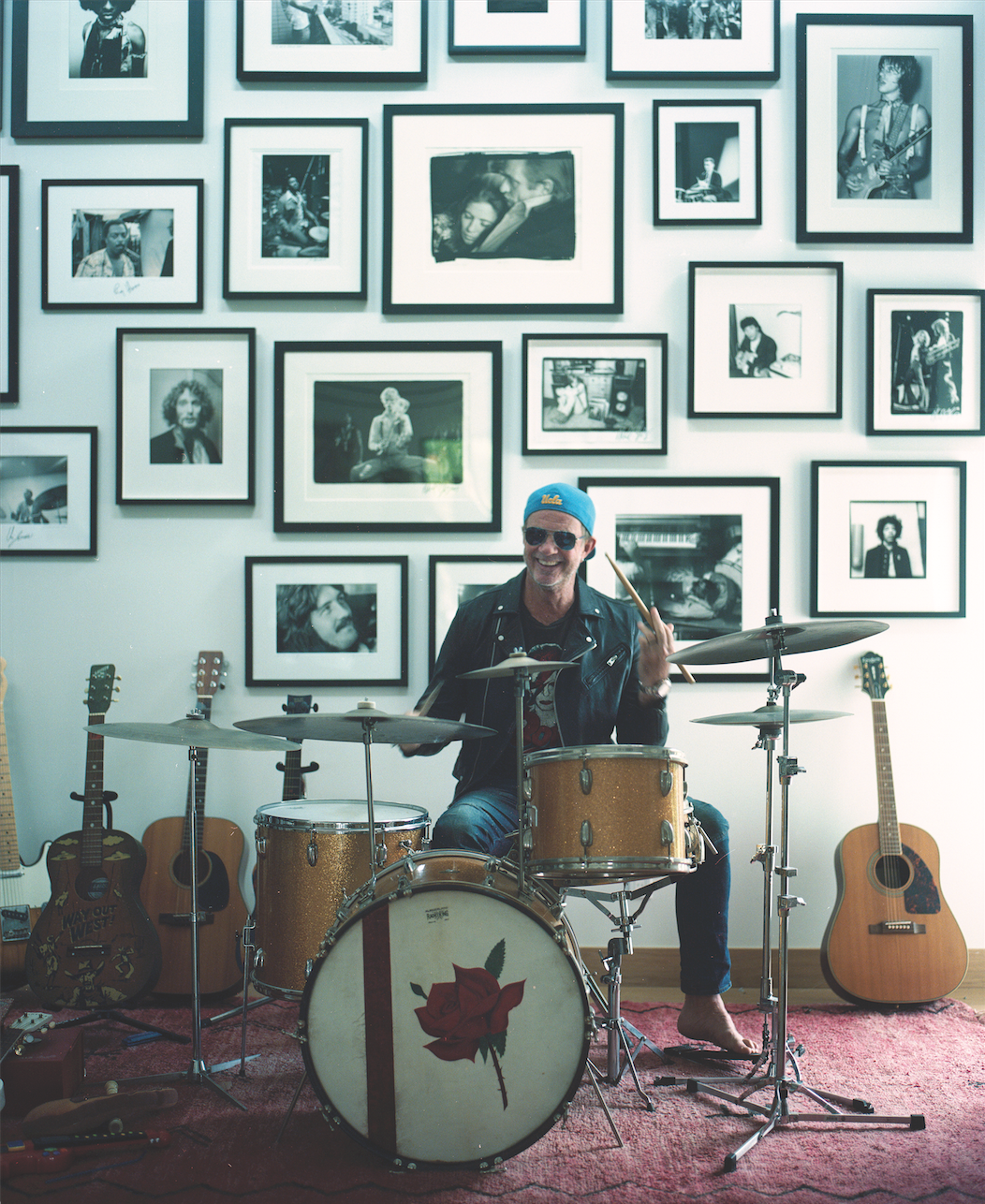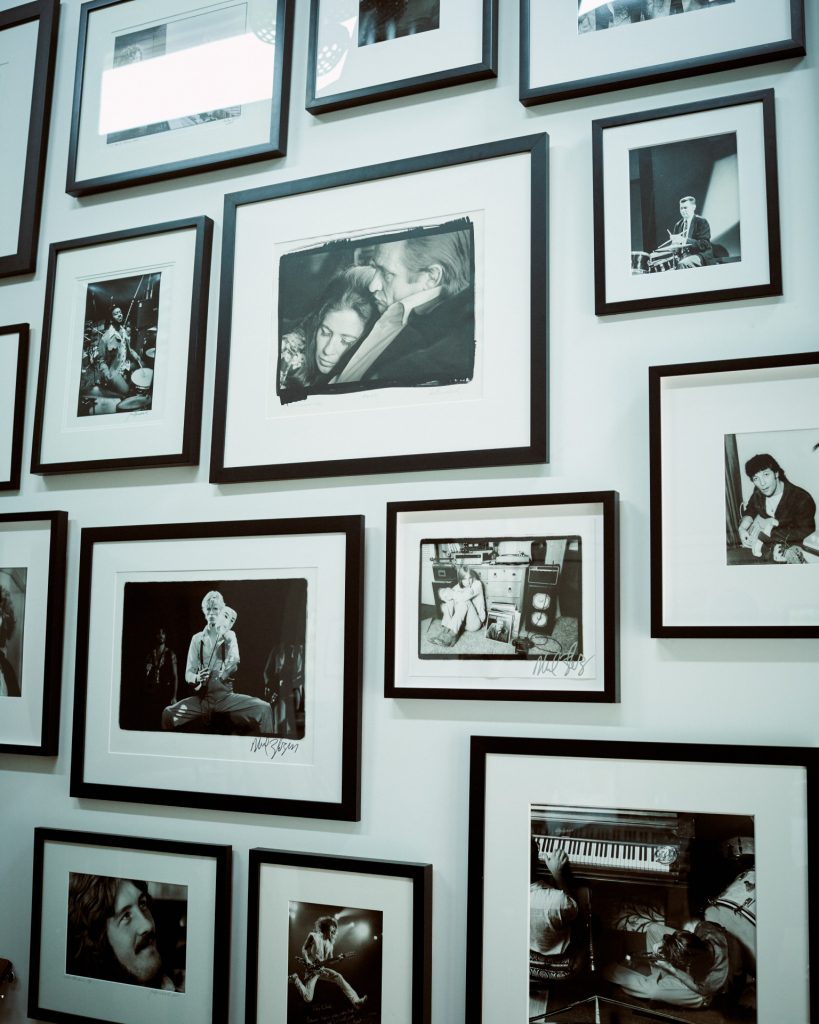
By Matt Diehl
Chad Smith may have been born a collector as much as a musician. As the kinetic virtuoso drummer powering the Red Hot Chili Peppers for nearly three decades (and inducted with the pioneering alt-rock group into the Rock & Roll Hall of Fame), Smith has become a music legend. Of late, however, Smith has also become a major collector of fine-art photography. He displays some 70 significant works at a time, spread across his residences in Montauk and Malibu—covering the walls with everything from Henri-Cartier Bresson’s “street photos” and Bob Jackson’s historic verité documentation of Jack Ruby’s assassination of Lee Harvey Oswald to iconic depictions of some of his musical heroes. “For me, it’s less about specific photographers,” Smith explains, “and more about what images speak to me.”
As soon as he got a royalty check, Smith began his odyssey as a collector. As a touring musician, he’d explore specialist vintage music shops around the world—acquiring historic instruments. “My most prized possession remains an old snare drum from the ’40s owned by the great Gene Krupa,” he notes. After meeting renowned lensman Jim Marshall (who Annie Leibovitz calls “the rock and roll photographer”) in the ’90s, Smith struck up a friendship that soon became an immersive mentorship into photographic arts. At first, Smith was drawn to candid black-and-white shots of the greats of popular music. “It was a way to get closer to those who inspired me to follow my love of music,” Smith explains. “Having these iconic images in my home, surrounding the space where I play music—whether it’s John Bonham looking over my shoulder, a rare shot of Jimi Hendrix behind the drums, or a glimpse of my dad’s favorite musician, Johnny Cash—just feels a little magical.”

As Smith’s connoisseurship began to evolve, however, he also found himself drawn to classic portraiture, street photography and the mavericks of creative expression. Now his collection spans everything from Edward Sheriff Curtis’ documentation of Native Americans at the dawn of the 20th century to more contemporary classics from Bresson, Elliott Erwitt and Montauk’s own artistic force of nature, Peter Beard. “Bresson was a master of photographing children as they played, and that joy is easily felt looking at his images,” Smith says. “Peter Beard’s photos of Africa, meanwhile, feel like a personal journal—his work is in a world of its own. Film doesn’t hide much: Even dressed up or veiled, a photograph’s truth is right there before you, meant to be witnessed. What each person is able to take away from that truth is what proves most compelling to me.”




